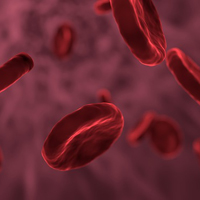Sickle cell disease in Nigerian children: A cross-sectional study on parental awareness and home management of pain

Accepted: 26 March 2021
All claims expressed in this article are solely those of the authors and do not necessarily represent those of their affiliated organizations, or those of the publisher, the editors and the reviewers. Any product that may be evaluated in this article or claim that may be made by its manufacturer is not guaranteed or endorsed by the publisher.
Authors
Pain, being the clinical trademark of Sickle Cell Disease (SCD), impacts negatively on clinical outcome in children. However, little is known regarding parental home pain management in children with SCD. We aimed to determine the parental awareness, use and perceived efficacy of pain relief techniques for children with SCD. This is a cross-sectional study involving 80 parents of children with SCD seen at General Hospital, Bwari, North-Central Nigeria. An interview-based, structured questionnaire was used to obtain information on socio-demographic characteristics, clinical history, parental awareness, use and perceived effectiveness of pain relief techniques. Data analysis was with SPSS version 20. Seventy-six (95.0%) respondents were aware of available pain relief technique(s) in SCD. Fifty-four (67.5%) respondents used pain relief techniques, 33 (61.1%) of whom used multiple pain relief techniques. The most commonly used drugs and Complementary and Alternative Medicine (CAM) were nonsteroidal anti-inflammatory drugs (47.0%) and massage (36.0%) respectively. Thirty-three (61.1%) respondents perceived their selected techniques as effective. A higher proportion (27.3%) of the children with multiple hospitalizations used multiple pain relief techniques when compared with 4.8% who used drugs alone (p=0.038). However, there was no significant difference based on age, gender, maternal education, genotype, age at diagnosis, pain episodes, regularity of routine drugs and packed cell volume of the children and pain relief techniques used (p>0.05). This study found high parental awareness and utilization of home pain relief techniques for children with SCD. The use of multiple pain relief techniques was influenced by multiple hospitalizations of the children.
How to Cite
PAGEPress has chosen to apply the Creative Commons Attribution NonCommercial 4.0 International License (CC BY-NC 4.0) to all manuscripts to be published.

 https://doi.org/10.4081/acbr.2021.131
https://doi.org/10.4081/acbr.2021.131



